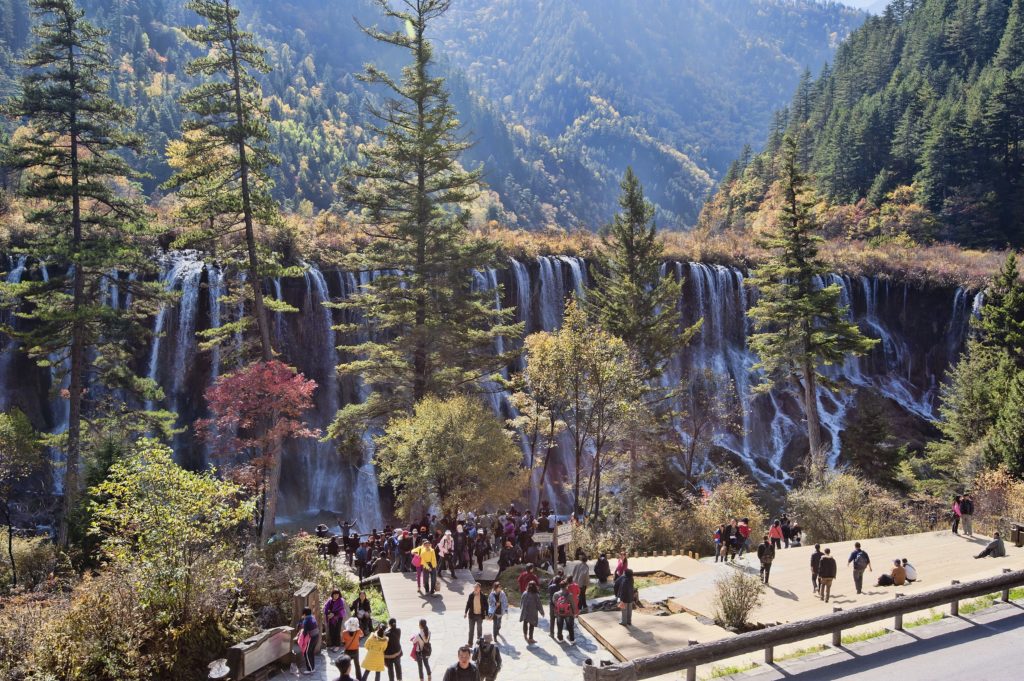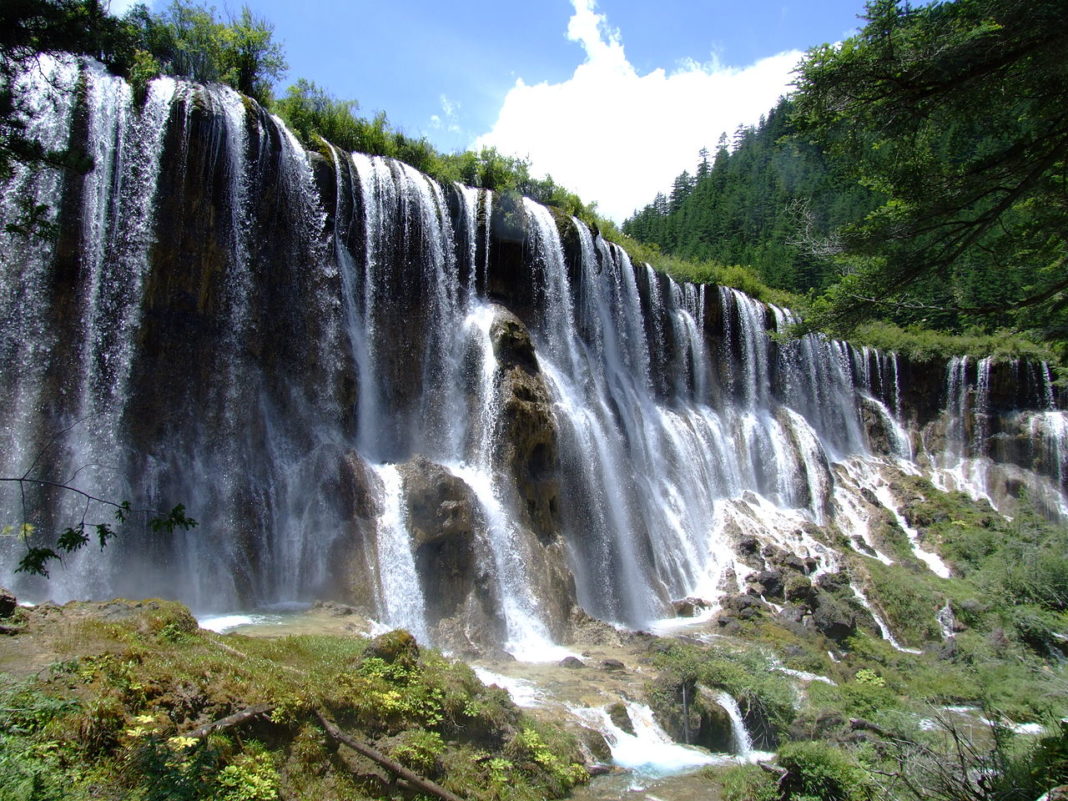Nuorilang Waterfall is one of the most spectacular waterfalls in the world. It is located in the Jiuzhaigou Valley of Sichuan Province, China. The waterfall is 101 meters (332 feet) high and 190 meters (623 feet) wide, making it one of the widest waterfalls in China.

The waterfall was formed by the erosion of limestone and tufa deposits over millions of years. The tufa deposits are formed when calcium carbonate-rich water seeps through the limestone and precipitates out. This process creates a series of terraces, which are then eroded by the waterfall.

The landscape of Nuorilang Waterfall is also very unique. The waterfall is surrounded by lush forests and towering mountains. The colors of the landscape are also very striking, with the white of the waterfall, the green of the forests, and the blue of the lakes.

In 2017, the Nuorilang Waterfall was damaged by an earthquake. A 19.4-meter-long crack was formed in the waterfall, and there was a risk that the waterfall could collapse. The administration of Jiuzhaigou National Park worked to repair the damage, and the waterfall was successfully restored.

The Nuorilang Waterfall is a popular tourist destination, and it is one of the most visited attractions in Jiuzhaigou National Park. The waterfall is especially beautiful during the spring and fall, when the leaves of the trees change color. Not only famous for its beauty, Nuoriliang waterfall is also attractive thanks to being selected as a legendary scene in the 1986 series Journey to the West.
According to the Internet















